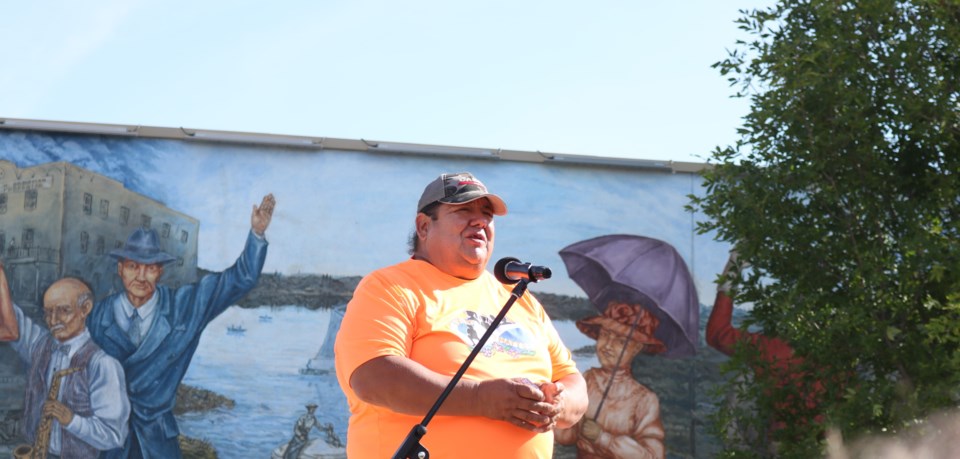YORKTON - The first step in efforts toward truth and reconciliation is truth.
But that truth is not always easy to share or hear, as those attending National Day of Truth and Reconciliation presentations in Yorkton Friday learned.
“I’ve carried this, heavy, heavy burden for many years,” said speaker Geraldine Mecas, a residential survivor.
She said it took years and in 2004, many years after attending the school, she put all the hurt into a poem about “the man in the black robe who did the magic tricks.”
The man in the robe would draw her in with tricks like pulling a quarter from behind her ear.
“We were awed by the man in the black robe who did magic tricks,” she said.
But then the man “lured us to secluded places,” she said, and in those secluded places he stole from her – her innocence, her goodness, her joy, her love, her hope and her tears.
At the Yorkton Tribal Council organized event Barry Kennedy picked up on the theme of how teachers in the school lured children.
“In Marieval (Indian Residential School) they used marbles,” he said, adding the shiny orbs were something that easily lured kids away.
Kennedy said being a survivor – the very word tells a truth.
“The word survivor means someone who has lived through an event where others have died,” he said.
Kennedy survived years at the residential school at Lebret.
“I was gone from my family for seven years,” he said, adding it was something his great grandparents, his grandparents, mother and neice all faced through the years, but never discussing it.
“There were always the secrets – the shame. It was shame. Something you never wanted to talk about,” he said.
But in time Kennedy knew he had to talk about it.
“I needed to tell my story – tell my truth,” he said, adding it was important so his children “never have to live what I survived.”
What he survived included being one of the students called to help bury another student.
Kennedy related he was only eight, or nine, and the “body wrapped in a sheet” was his “first introduction to death.”
The priest said a few words, and the body “was put into the ground,” with Kennedy saying he didn’t even know if it was a boy, or a girl.
“It really hit me hard,” he said.
Kennedy said being hit hard was part of going to the school too. It was a near daily occurrence to be “slapped, kicked, punched to the floor.
“It was not a nice way to raise kids . . . Indian Residential School, there was nothing nice about it.”
Given the abuses suffered in residential schools, Kennedy said it’s not so surprising abuse happened for many once they became adults.
“It’s something we took home, something we practiced at home,” he said.
That is why the day is important, to tell the truths of the past, but it is only part of a journey, said speaker Peter McCallum who worked as Indian Residential Schools Coordinator for Indigenous Services Canada.
“This is all about survivors and the work we have done in the past,” said McCallum, who added the efforts have been important for “some of the help being provided to our people.”
McCallum said the process has not always been easy, and work still needs to be done, there are now programs and funding to help survivors.
While retired officially, McCallum said he still works to move things forward where he can to help people.
“I will continue to advocate,” he said, adding it is important supports be there for when survivors reach out for help.
That help often starts with simply being there to listen as a survivor finally feels it is their time to share their story, their truth.
“There’s a lot of tears. It’s really difficult to learn a survivor, an 80-years old, saying this is what happened to me,” he said, and then they add “can you help me.
“You do as much as you can to get services to them.”






